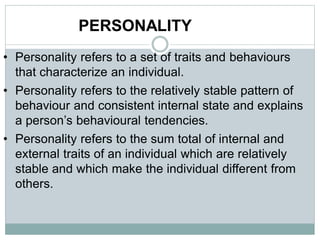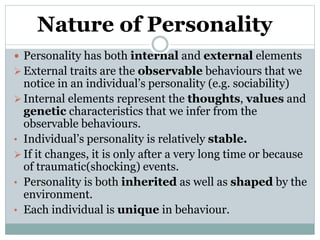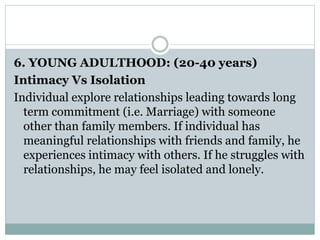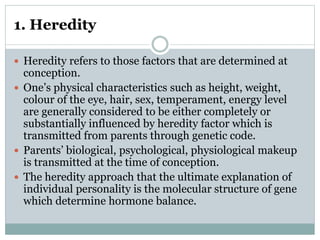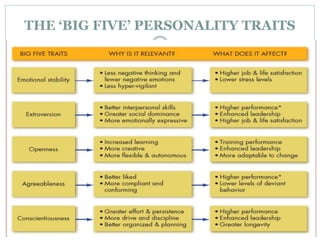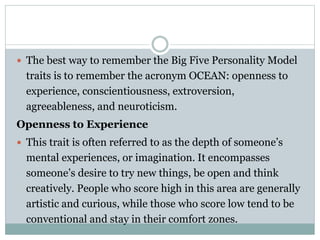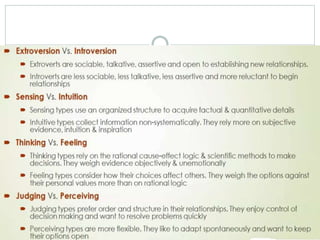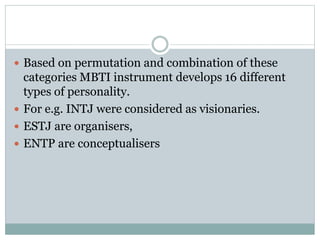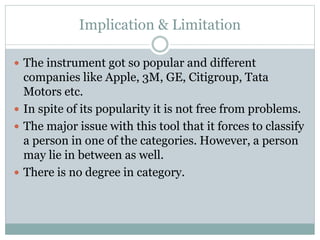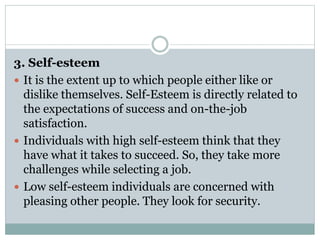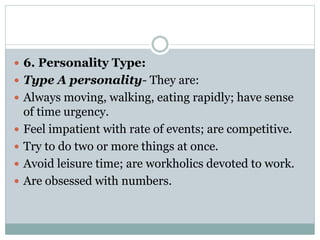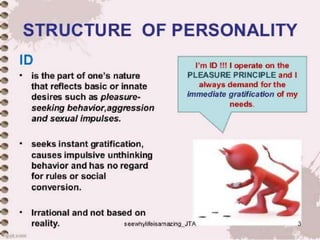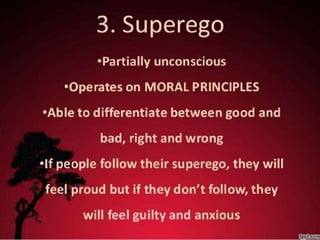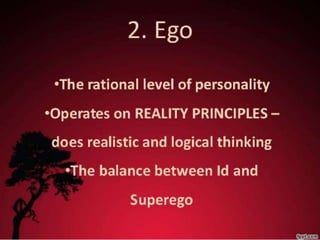Personality refers to the combination of behaviors, emotions, motivations, and thought patterns that characterize an individual. It is shaped by both hereditary and environmental factors like family, culture, and social interactions. Major theories of personality development include Freud's psychosexual stages, Erikson's psychosocial stages, and the Big Five model which describes personality in terms of openness, conscientiousness, extraversion, agreeableness, and neuroticism. Personality attributes like locus of control, self-esteem, and risk-taking influence how individuals behave in different situations. Personality testing tools like Myers-Briggs can provide insight into personality types.

